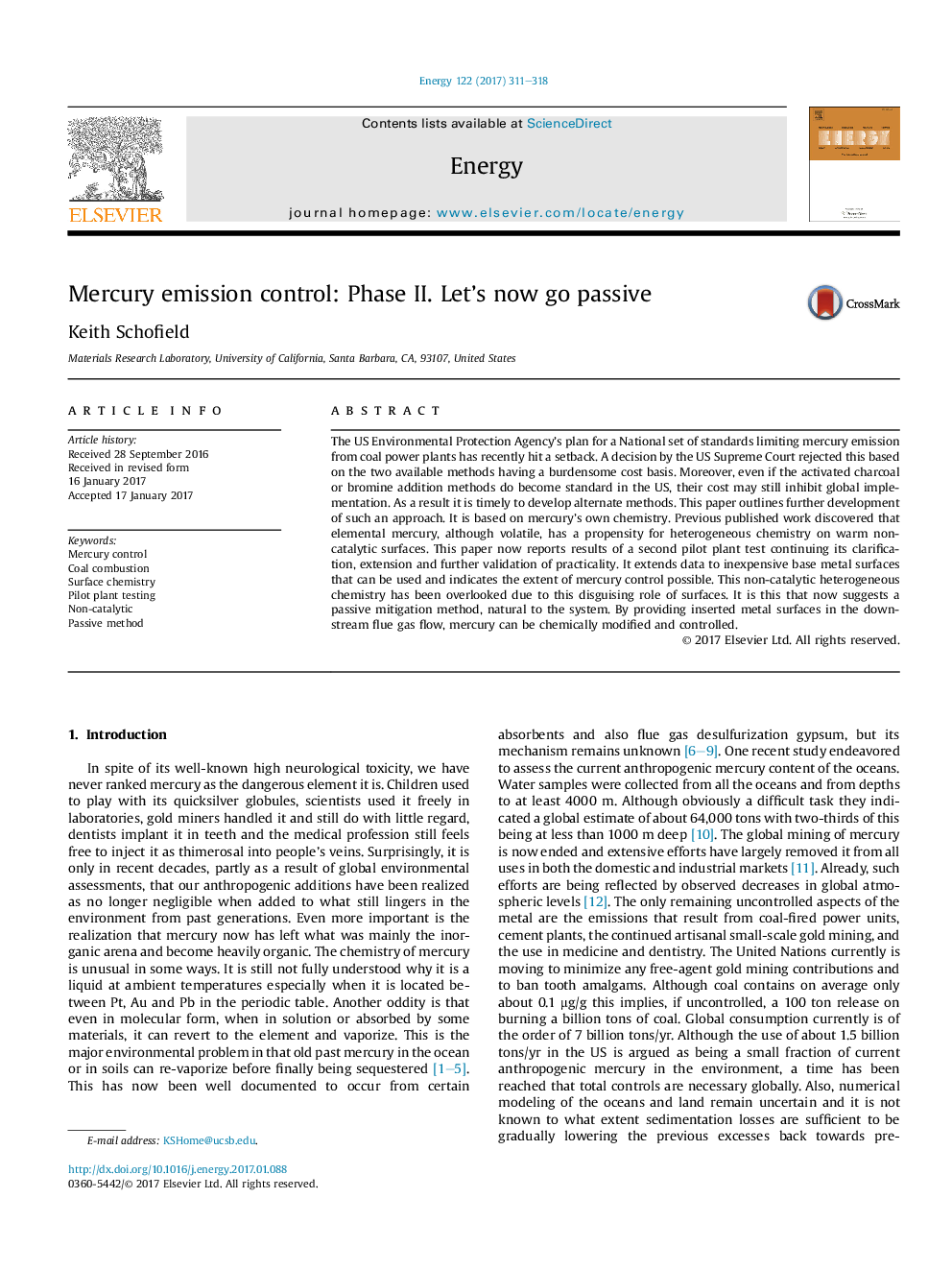| Article ID | Journal | Published Year | Pages | File Type |
|---|---|---|---|---|
| 5476258 | Energy | 2017 | 8 Pages |
Abstract
The US Environmental Protection Agency's plan for a National set of standards limiting mercury emission from coal power plants has recently hit a setback. A decision by the US Supreme Court rejected this based on the two available methods having a burdensome cost basis. Moreover, even if the activated charcoal or bromine addition methods do become standard in the US, their cost may still inhibit global implementation. As a result it is timely to develop alternate methods. This paper outlines further development of such an approach. It is based on mercury's own chemistry. Previous published work discovered that elemental mercury, although volatile, has a propensity for heterogeneous chemistry on warm non-catalytic surfaces. This paper now reports results of a second pilot plant test continuing its clarification, extension and further validation of practicality. It extends data to inexpensive base metal surfaces that can be used and indicates the extent of mercury control possible. This non-catalytic heterogeneous chemistry has been overlooked due to this disguising role of surfaces. It is this that now suggests a passive mitigation method, natural to the system. By providing inserted metal surfaces in the downstream flue gas flow, mercury can be chemically modified and controlled.
Related Topics
Physical Sciences and Engineering
Energy
Energy (General)
Authors
Keith Schofield,
